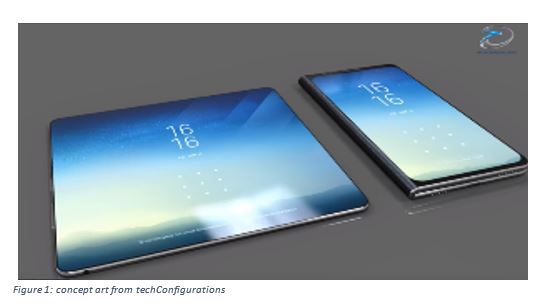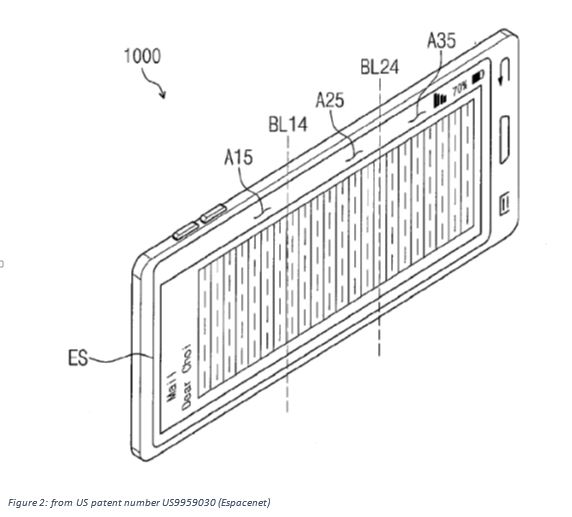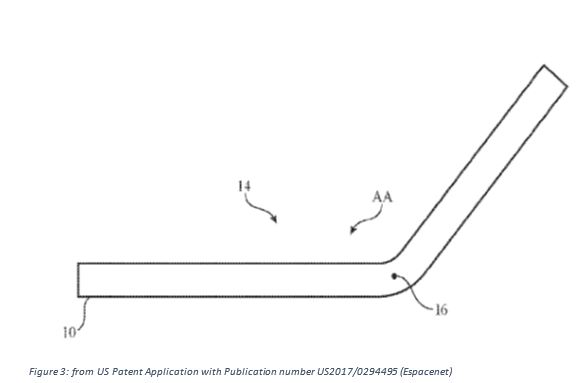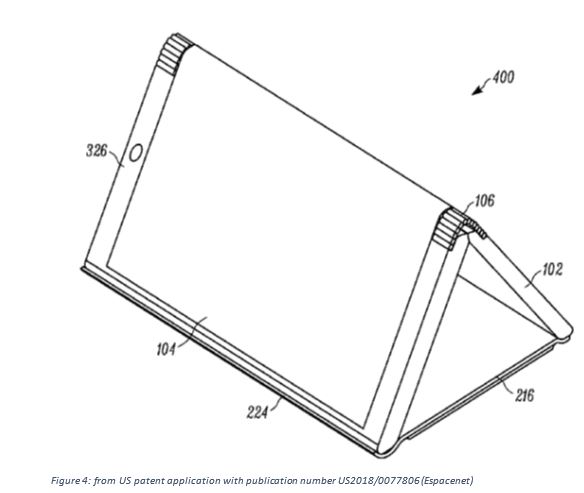31/05/2018
Flexible displays have been around for decades. However, to date, none have been commercially viable. This may be about to change. We look through the developments that have been made over time. This starts with some early flexible displays up to those that we will hopefully see in commercial products soon through our research into some the patents and patent applications of some potential key players. Exciting times!
The first to create a flexible display was Xerox Palo Alto Research Center (PARC) in 1974. Xerox PARC created Gyricon, an “e-paper” in the form of a thin layer of transparent plastic comprising beads which rotated in response to an applied voltage to show an image. A number of patent applications were filed in the early 1990s for “e-paper”. In 2003, Xerox PARC attempted to commercialise the technology, but at the time the “e-paper” could not be made cheaply enough. Developments since 2000 have taken the form of flexible OLED displays. These include, from 2007, Sony’s 0.3mm thick OLED screen that was flexible while displaying video. In 2010, this was upgraded to their “rollable” display that could be rolled up while still displaying video. Another example is the Nokia Morph, the joint project between the Nokia Research Center and the Cambridge Nanoscience Centre. These displays, along with many others, could not be made on a commercially viable scale at the time.
ZTE’s Axon M is getting close. It is a foldable phone currently available . However, the two fully functioning screens are joined by a hinge and there is no (intentional!) bending of any screen.
Could the technology finally exist? Patent applications and patents can give us an insight into coming trends in technology. In recent years, a number of patent applications filed by big players including Samsung, Apple, Huawei, LG, and Motorola have been published in this space.
Samsung, a frontrunner in the field of foldable technology having released a number of concept videos over the past few years, was recently granted multiple patents for foldable displays/devices. It was originally rumoured that the Samsung foldable phones would comprise one screen that folded down the middle. Then, last year (as conceptualised in Figure 1 below), reports stated that Samsung were working on a smartphone design comprising three screens. A first screen that functions when the device is folded, and two more screens which, when the device is unfolded, form one larger, tablet-sized screen. What is not known is if the two screens will look as seamless as they do in Figure 1 or if there will be any division or inconsistency along the fold of the screen.

One of Samsung’s recently granted patents illustrates a trifold smartphone (seen in Figure 2 below). Despite the difficulties posed by even a single fold in a screen, Samsung have been granted a patent for a single long screen that can be folded in two places resulting in a number of different operational “modes”. The patent also mentions “deformation sensors” which appear to sense when bending occurs such that the user interface can be rearranged to suit the current mode of operation. Rumoured to release a foldable device in the first quarter of 2019, whether it is the earlier reported phone/tablet combination or the tri-fold device, Samsung looks to be in the running to bring a foldable device to market first.

Wherever mobile technology is developing, Apple can usually be found. Towards the end of 2017, a patent application filed by Apple was published. The claims of the patent application define: “An electronic device, comprising… a flexible display… having a bending region that bends about an axis”. The patent application illustrates a screen (Figure 3) being bent during use, and describes “enhanced flexibility regions” to avoid damage resulting from repeated bending of the screen.

Motorola filed a patent application that has recently published and is directed to a similar invention as that shown in Figure 1. However, the patent application, titled “Three part foldable housing supporting multiple use positions in an electronic device”, shows an invention (as seen in Figure 4) comprising two screens which, when the device is folded, are located on the outside of the device. The device may then be unfolded such that the two screens form one larger screen and provide a tablet-like mode. Also described is a housing part (reference numeral 216 in Figure 4) which can serve as both a cover to protect the display when folded, and also as a stand to prop up the device during use (a function provided by many external device covers sold today).

Both LG and Huawei have also been working on the field of foldable technology. LG have demonstrated working foldable displays and recently registered a design illustrating a “mobile phone with a flexible display which can be folded in half”. Huawei filed a patent application for a foldable smartphone similar to the Motorola two-screen device which can fold out into a single larger screen. A foldable phone by Huawei has been tipped for a late 2018 release.
More exciting news from China comes from Royole, the maker of the world’s thinnest full-colour flexible display (which has a width of just 0.01mm!). In 2018 alone, more than a dozen patent applications in this field filed by Royole have published for both flexible devices themselves and to manufacturing apparatus for flexible electronics.
Furthermore, China Star Optoelectronics Technology (CTOT) plans to begin mass production of flexible active-matrix OLED (AMOLED) screens in 2019 and aims be producing 45,000 units a month by 2020.
Of course, there are a number of difficulties to overcome for those trying to progress in this field, one being the visibility of the fold lines. The less noticeable the fold lines, the better. If the screen looks as seamless as in the concept art in Figure 1, there is a much greater chance that these devices will be successful, and they could replace tablet devices. Additionally, given that these screens are folded, the thickness of the device will increase. If these devices are to be commercially successful, their bulkiness will have to be kept to a minimum.
Patent applications and granted patents do not necessarily mean that these companies are actually making these inventions. Thousands of patent applications are filed every year for inventions that are never made. However, they can often serve as indicators for what is to come. As many of these technology giants are filing applications in the field of foldable electronic devices, perhaps we will soon see our everyday electronic devices change dramatically, and the days of the fixed single-screen phone will be gone.
This article is for general information only. Its content is not a statement of the law on any subject and does not constitute advice. Please contact Reddie & Grose LLP for advice before taking any action in reliance on it.


